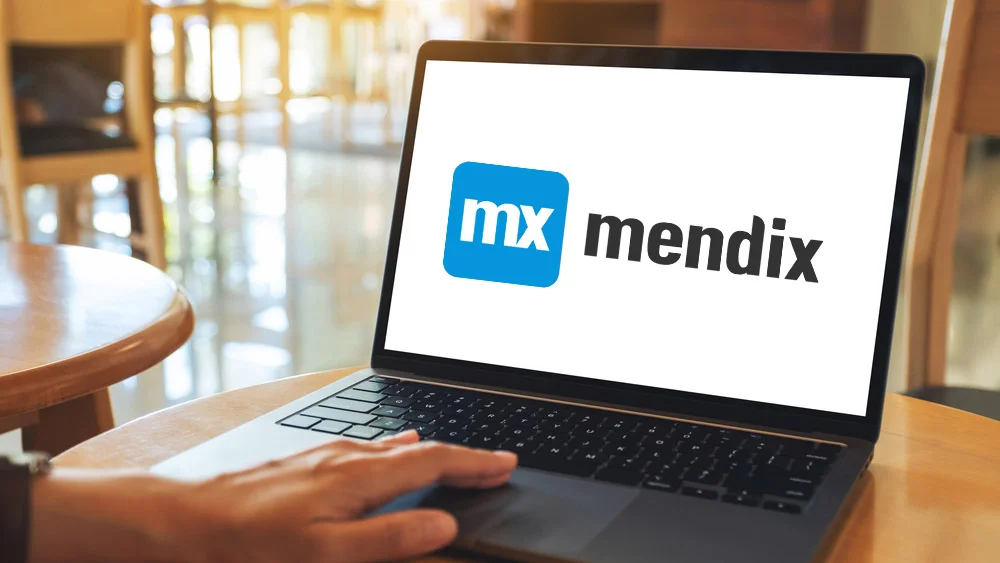Top 7 Platforms Simplifying Low-code Development in 2023: A Detailed Listing Guide
The demand for rapid deployment and agile solutions has given rise to low-code development platforms.
These platforms offer a paradigm shift, enabling businesses to create software applications with minimal hand-coding, significantly reducing development time and costs. With an array of options available in the market, choosing the right low-code app development platform becomes critical.
This article delves into seven innovative platforms that simplify low-code development, guiding you through their features, benefits, and challenges to aid in your selection process.
A List of 7 Low-code Development Platforms
Low-code development, streamlining software creation, features leading platforms like OutSystems, Microsoft Power Apps, Appian, Mendix, Salesforce Lightning, Google AppSheet, and Quick Base. These platforms drive innovation with user-friendly interfaces, robust integrations, and efficient workflows, simplifying the development process.
As you see, there are multiple low-code platforms to choose from, which brings confusion to choosing the right one for your project needs. It’s here where the expertise of seasoned software development companies becomes invaluable.
If you are feeling overwhelmed by the options, Get in touch with software consultants at Space-O: [https://www.spaceotechnologies.com/] A leader in software development, will guide you through selecting the most suitable platform for your specific requirements.
1. OutSystems
OutSystems stands out as a robust low-code platform known for its enterprise-grade capabilities. Offering a visual development environment, it empowers both professional developers and business users to collaborate seamlessly. Its drag-and-drop interface and pre-built templates expedite app development while ensuring scalability and security. OutSystems’ integration capabilities across various systems and databases make it a preferred choice for complex enterprise solutions.
Key Features:
- Visual development environment for seamless collaboration between professional developers and business users.
- Drag-and-drop interface and pre-built templates for expedited app development.
- Integration capabilities across various systems and databases for complex enterprise solutions.
Example: A multinational corporation uses OutSystems to create a unified customer relationship management (CRM) system, integrating data from diverse departments and legacy systems.
2. Microsoft Power Apps
Leveraging the Microsoft ecosystem, Power Apps offers a user-friendly interface for building custom apps. Its integration with Microsoft Azure services and robust data connectors streamlines the development process. Power Apps enables users to create apps compatible with web, mobile, and desktop environments, making it versatile for diverse business needs. A report from Gartner says that Microsoftware Power Apps is one of the best low-code app platforms with 4.5 ratings.
Key Features:
- User-friendly interface leveraging the Microsoft ecosystem for custom app creation.
- Integration with Microsoft Azure services and robust data connectors.
- Compatibility with web, mobile, and desktop environments for versatile business needs.
Example: A healthcare institution uses Power Apps to develop a custom patient management system, integrating patient records across devices and departments securely.
3. Appian
Appian’s low-code automation platform emphasizes workflow automation and business process management. Its intuitive interface allows users to design, execute, and optimize workflows effortlessly. Appian’s AI-driven features and emphasis on automation make it a potent tool for businesses seeking operational efficiency and intelligent process automation.
Key Features:
- Low-code automation platform emphasizing workflow automation and business process management.
- Intuitive interface for designing, executing, and optimizing workflows effortlessly.
- AI-driven features for operational efficiency and intelligent process automation.
Example: An insurance company utilizes Appian to streamline claims processing, automating workflows to improve efficiency and customer service.
4. Mendix
Mendix focuses on collaboration and ease of use, catering to both professional developers and citizen developers. Its visual development environment and model-driven architecture enable rapid prototyping and deployment. Mendix’s strong emphasis on collaboration facilitates cross-functional teams to work seamlessly on projects, enhancing productivity and innovation.
Key Features:
- Emphasis on collaboration and ease of use for professional and citizen developers.
- Visual development environment and model-driven architecture for rapid prototyping and deployment.
- Facilitation of cross-functional teams, enhancing productivity and innovation.
Example: A manufacturing company employs Mendix to develop a production tracking system, enabling real-time collaboration between factory floor workers and management.
5. Ui Bakery
Ui Bakery is a low-code development platform that focuses specifically on crafting internal business tools and applications. It offers pre-built components, drag-and-drop functionality, and database integrations to streamline development for non-coders.
Key Features:
- Interface builder with drag-and-drop functionality, templates, dashboards, and 25+ ready-made UI components
- AI App Generator for creation of internal tools, CRUD apps, admin panels with a single prompt
- Data integrations to connect UI to various data sources like SQL and NoSQL databases, APIs, and 50+ other tools.
- Business logic with code and no-code to implement data manipulation, conditional logic, and workflows visually or with custom Javascript.
- Deployment of applications with a single click and easy user access management.
Example: A software development company leverages UI Bakery to reduce manual internal processes for their employees, thus, eliminating manual calculations, automating admin tasks in 1 hour (vs 16 hours coding), and creating a universal solution for smoother communication.
6. Salesforce Lightning
Salesforce Lightning, which operates from within the Salesforce ecology, also provides a medium-grade low-code development environment. With its focus on customer relationship management (CRM), it can provide businesses with a solution designed to suit their own unique needs. Salesforce Lightning offers strong scalability and broad integration functionality, making app development in the Salesforce environment easier.
Key Features:
- Comprehensive low-code development environment integrated with Salesforce CRM.
- Custom solutions tailored to specific business needs with robust scalability.
- Extensive integration capabilities within the Salesforce ecosystem.
Example: A sales-focused organization utilizes Salesforce Lightning to create a custom sales tracking and lead management system, integrating data from various customer touchpoints.
7. Google AppSheet
AppSheet, which is a part of Google Cloud, offers an easy way to make mobile and web apps. You don’t need much coding knowledge to use it. You can build web apps easily using Google Sheets or other data. AppSheet is simple to use and works well with many Google services. This makes it a good choice for businesses that want to make an app quickly and without spending a lot of money.
Key Features:
- User-friendly platform for mobile and web app development.
- No-code/low-code interface leveraging Google Sheets and other data sources.
- Integration with various Google services for quick and cost-effective app development.
Example: An educational institution adopts Google AppSheet to build a student management app, integrating attendance records, grades, and communication tools for teachers and parents.
8. Quick Base
Quick Base is all about fast app building. This platform allows you to develop your custom programs without requiring much programming expertise. Using standardized templates and an easy-to-use interface, you’re able to make the kinds of applications your company requires. Furthermore, Quick Base can grow with you and is suitable for all kinds of organizations and projects.
Key Features:
- Rapid application development without extensive coding knowledge.
- Customizable templates and an easy-to-use interface for tailored applications.
- Flexibility and scalability for various industries and use cases.
Example: A project management consultancy utilizes Quick Base to create a bespoke project tracking system, allowing clients to monitor progress and collaborate with the consultancy team seamlessly.
How to Choose the Low-Code App Development Platform
When selecting a low-code app development platform, consider the following factors:
1. Ease of Use
Look for a platform that aligns with your team’s expertise and provides an intuitive interface for rapid development.
- User-friendliness: Look for a platform that suits your team’s proficiency level. Some platforms cater more to seasoned developers, while others prioritize citizen developers or those with limited coding skills.
- Intuitive Interface: Seek a platform with a straightforward, visually guided interface. Drag-and-drop functionalities, pre-built templates, and clear documentation facilitate rapid development.
- Training and Support: Consider platforms offering training resources, tutorials, and robust customer support to assist in onboarding and troubleshooting.
2. Scalability
Ensure the platform can accommodate your application’s growth and increasing user demands without compromising performance.
- Performance: Evaluate how the platform handles increasing data loads and user demands. It should maintain performance levels even as your application grows in complexity and usage.
- Resource Allocation: Ensure the platform allows for easy scalability by allocating resources dynamically, accommodating increased traffic or data processing needs without downtime.
- Flexibility: Look for platforms that offer scalability not just in terms of users but also in adapting to evolving business requirements without significant restructuring.
3. Integration Capabilities
Assess the platform’s ability to integrate with existing systems, databases, and third-party services crucial for your business operations.
- Compatibility: Assess how well the platform integrates with your existing systems, databases, and third-party services crucial for your business operations. Look for a wide range of connectors and APIs.
- Data Consistency and Security: Ensure seamless data transfer and consistency across integrated systems while maintaining data security and integrity.
- Customization and Extensibility: Seek platforms that allow custom integrations and provide extensibility options, enabling tailored solutions for your specific needs.
4. Security Features
Prioritize platforms that offer robust security measures to safeguard sensitive data and comply with industry regulations.
- Data Encryption and Access Control: Prioritize platforms that offer robust encryption techniques and granular access controls to safeguard sensitive data.
- Compliance and Regulations: Ensure the platform complies with industry standards and regulations regarding data privacy and security.
- Regular Updates and Patch Management: Look for platforms that consistently update security measures and promptly address vulnerabilities through patches and updates.
5. Community Support and Updates
Consider platforms with active communities, regular updates, and strong customer support for assistance and staying updated on advancements.
- Active Community: Consider platforms with an active user community or forums where developers share insights, best practices, and solutions to common issues.
- Regular Updates: Platforms that regularly update their features, security measures, and functionalities demonstrate a commitment to improvement and staying relevant in the evolving tech landscape.
- Customer Support: Robust customer support channels, including documentation, tutorials, and responsive help desks, are crucial for addressing queries and issues promptly.
As you have learned about the no-code app development methods, do you want to learn other app development methods? Check out this guide which has a detailed answer on different methods used for mobile app development.
7 Benefits of Low-Code App Development Platforms
- Accelerated Development: Low-code platforms significantly reduce development time by automating repetitive tasks and offering pre-built components.
- Cost-efficiency: With reduced development hours and minimal need for specialized coding skills, low-code platforms cut down operational costs.
- Empowering Citizen Developers: These platforms enable business users with limited coding knowledge to contribute to application development, fostering innovation.
- Agility and Flexibility: Low-code platforms allow for quick iterations, facilitating adaptability to changing business requirements and market demands.
- Better Teamwork: IT and business teams work together more effectively, making sure tech solutions match up well with what the business wants to achieve.
- Quick App Making and Launching: Easy-to-use tools like visual layouts and drag-and-drop options help make and release apps fast, so they can be tested and improved quickly.
- Growth and Connection: These platforms can handle growing needs and connect well with other systems, making sure apps can expand as the business does.
While low-code development offers numerous benefits, it also presents some challenges:
- Maintaining Code Quality: Over-reliance on visual development can sometimes compromise the quality of the underlying code, requiring careful oversight.
- Security Concerns: Rapid development might overlook security measures, making applications vulnerable. Ensuring robust security protocols and regular audits is crucial.
- Vendor Lock-in: Depending too heavily on a specific platform might restrict flexibility in the long run. Evaluate platforms that offer interoperability and flexibility.
To mitigate these challenges, consider implementing the following security measures:
- Regular Security Audits: Conduct thorough security audits to identify and address vulnerabilities in the application.
- Training and Awareness: Educate developers and users about security best practices to minimize risks.
- Data Encryption and Access Controls: Implement robust encryption techniques and access controls to protect sensitive data.
Conclusion
Low-code development platforms have transformed the software development landscape, empowering businesses to create applications rapidly and efficiently. Each platform offers unique features catering to different business needs and expertise levels. Understanding the nuances of these platforms and considering factors like ease of use, scalability, integration capabilities, and security measures is essential in selecting the right platform for your organization. While the benefits of low-code development are substantial, addressing challenges and implementing stringent security measures is crucial to harness its full potential.
As technology keeps advancing, it’s constantly fueling new ideas in low-code development, making it a key element in today’s software development approaches. By adopting these platforms, companies can speed up app creation and encourage teamwork, creativity, and flexibility. This leads to more efficient operations and a stronger position in the competitive market.








